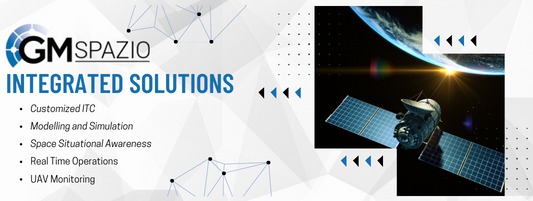
International geopolitical tensions are not confined to the Earth’s surface; space is increasingly becoming a strategic arena for both competition and cooperation among the world's leading powers. In recent years, satellites have become essential across various civil and military sectors, including communications and connectivity, Earth observation, navigation, and surveillance.
At the same time, the emergence of new private players, such as Elon Musk’s SpaceX, has revolutionized the space launch sector and access to low Earth orbit (LEO). These developments create new opportunities but also raise significant concerns regarding security, militarization, and the protection of space resources.
The proliferation of commercial satellite constellations (SpaceX’s Starlink, OneWeb, Amazon’s Kuiper) and the increasing number of launches by various countries are making low Earth orbit more congested. Collisions or hostile actions that destroy a satellite could trigger cascading reactions (Kessler effect), increasing the risk of accidents and damaging numerous orbital infrastructures.
Satellites are a critical component of the economy and defense of many nations. The destruction or sabotage of a constellation could disrupt communication services, interfere with civilian and military navigation systems, and compromise emergency response efforts in the event of natural disasters. Additionally, real-time satellite imagery is crucial for monitoring military movements, migration flows, and environmental changes.
The growing competition between superpowers such as the United States, China, and Russia has driven the development of anti-satellite (ASAT) technologies capable of damaging or destroying satellites in orbit. These tests generate thousands of orbital debris fragments, which in turn threaten civilian and scientific space infrastructure. As more countries develop these capabilities, the risk of a conflict extending into space increases.
Another threat to consider is cyber warfare: some space-related attacks may occur “silently,” through software manipulation or signal jamming, rather than explicit destructive actions. This makes cybersecurity and cyber warfare central aspects of the race for space dominance.
Elon Musk and SpaceX’s “Space Revolution”
Founded by Elon Musk in 2002, SpaceX has revolutionized the space launch industry by developing reusable launch vehicles (Falcon 9, Falcon Heavy) and implementing innovative production strategies that have drastically reduced costs. This efficiency has positioned the company as a leading provider of launch services.
Beyond reusable launch vehicles, SpaceX has developed Starlink, a constellation of thousands of low Earth orbit satellites designed to provide global internet connectivity. This infrastructure carries significant geopolitical implications. Initially conceived to provide internet access to remote areas, Starlink has been utilized in military contexts, such as the conflict in Ukraine, where it has provided critical communications to Ukrainian forces. This ability to directly influence communications in conflict zones raises questions about nations' dependence on private technological infrastructure and its implications for national security.
Today, SpaceX collaborates closely with various U.S. government agencies, from NASA to the Department of Defense, securing military launch contracts worth approximately $20 billion in funding and subsidies. This grants the company access to classified information and allows it to operate in high-security environments, strengthening the synergy between the private sector and government institutions. These developments set important precedents for relations between corporations and governments.
Furthermore, Musk has taken on an increasingly influential role in U.S. politics, particularly under the administration of President Donald Trump. His appointment as head of the newly created Department for Government Efficiency highlights his central role in governmental strategies, sparking debates about potential conflicts of interest between his private enterprises and public policies.
In Europe, Starlink's dominance in satellite communications has prompted the European Union to develop its own initiatives, such as IRIS-2, to ensure technological autonomy and reduce reliance on non-European private providers. However, the implementation of such projects will take time, whereas Musk’s constellation continues to expand rapidly, with thousands of operational satellites already in orbit.
In conclusion, Elon Musk’s position in U.S. politics and his influence in the aerospace sector have profound implications both nationally and internationally. His ability to operate at the intersection of public and private interests necessitates careful consideration of future technological power dynamics and strategies to balance innovation, fair competition, and global security.
Scenarios and Future Prospects
With SpaceX’s strengthening position and the advancements of powers such as China (with its lunar program and ASAT capabilities) and Russia (traditionally strong in space launches and now striving to demonstrate its space independence), the space race is becoming more complex. Geopolitical tensions may lead to an increase in anti-satellite tests, the development of independent navigation and communication constellations, and potential military or cyber incidents targeting rival satellites.
The growing concentration of satellites in LEO is pushing for new international regulations on debris management and ASAT tests. Organizations like COPUOS (United Nations Committee on the Peaceful Uses of Outer Space) could play a crucial role in establishing rules and bilateral or multilateral agreements to prevent dangerous situations. Meanwhile, new forms of commercial competition may emerge, particularly in the aerospace and telecommunications sectors, affecting the ecosystem of space launches and satellite services.
Looking further ahead, Musk’s project to colonize Mars (via the Starship vehicle) and the plans of other space agencies for lunar and asteroid exploration suggest that competition may extend beyond Earth’s orbit. Those who establish a stable presence on the Moon or Mars first could gain significant economic, scientific, and strategic advantages.
The future of human presence in space will depend on the balance between competition (technological, economic, and military) and scientific collaboration. On one hand, geopolitical tensions between superpowers persist, while on the other, there is a push to share knowledge and resources to prevent space from becoming yet another battleground—with potentially catastrophic consequences for the entire global community.





